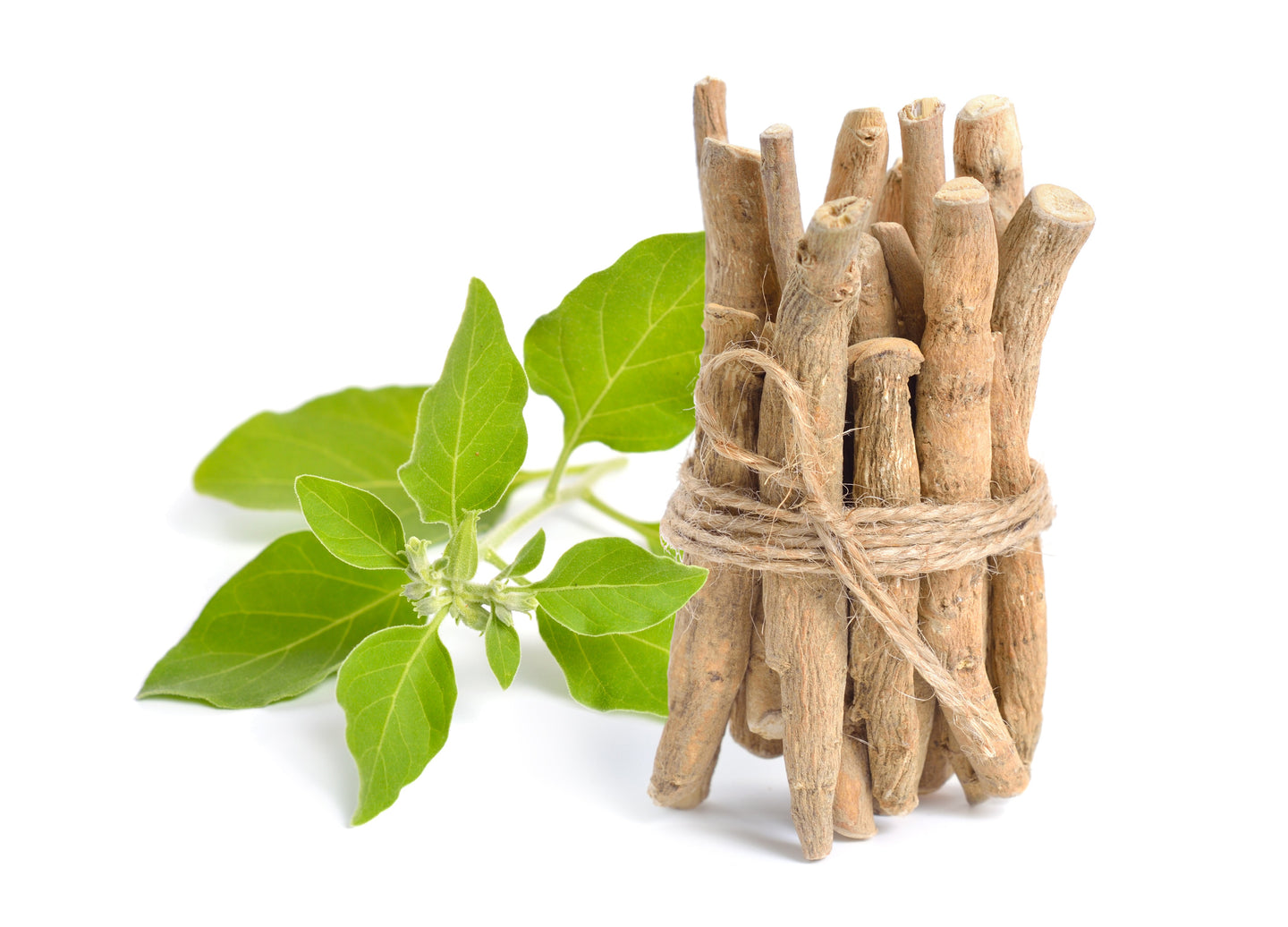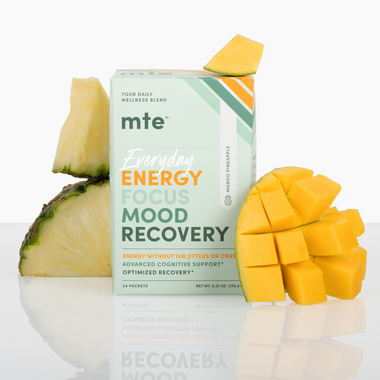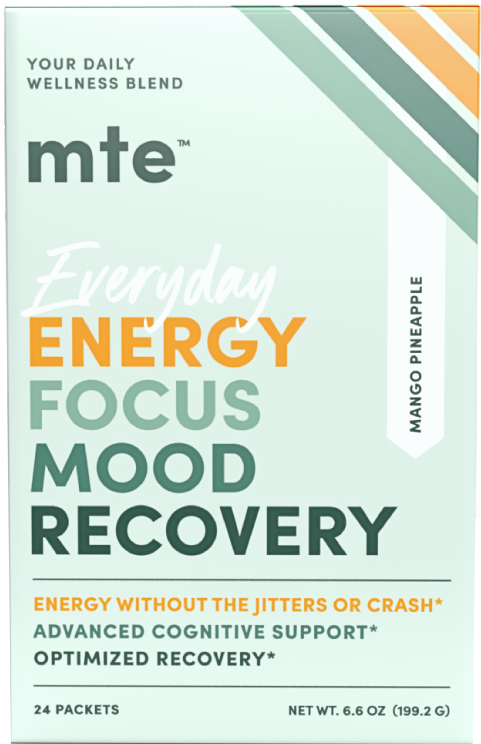
Understanding Ashwagandha: from Ancient Ayurvedic Medicine to Modern Health & Wellness
Perhaps one of the most recognized ingredients in the modern movement for holistic health is ashwagandha. Also known as Indian ginseng and Indian winter cherry, the scientific name of this potent and versatile adaptogenic herb is Withania somnifera. This small perennial shrub is a member of the nightshade family, a group of nerve-active plants that are anything from health-boosting to life-ending. Don’t worry – ashwagandha belongs to the health-boosting group.
Considered a nervine tonic, ashwagandha is often used in holistic herbal powders, pastes and drinks for a variety of maladies, including stress, fertility issues, athletic performance, and mood, among many other things. Several millennia’s worth of tradition, medical text, anecdotal evidence, and now clinical data has indicated over and over again the value of this medicinal root in promoting whole-body health.
The Origins of Ashwagandha as an Adaptogen
Ashwagandha’s origins as a medicinal tonic date to between 5000-6000 YBP. A main component in Indian Ayurvedic medicine, this potent herb’s name is Sanskrit for “smells like a horse.” Appropriately, this name describes not only the smell of the root, but the belief that a drinking ashwagandha could give you the power of a horse. Is this where the saying, “healthy as a horse” came from? Probably not, but it fits, right?
Ayurvedic medicine is focused in herbal blends of teas, drinks and pastes, referred to as Rasayana, which translates roughly to “rejuvenator” or “path of essence.” These tonics were most often mixtures of several medicinal plants, but ashwagandha was one of a few elite adaptogenic plants that is used singularly as a Rasayana.
Where’s the evidence for the ancient use of ashwagandha? All three generations of Ayurvedic medical texts describe the medicinal applications of this nightshade cousin in detail. This also suggests to modern researchers that the origins of ashwagandha do, in fact, lie in Asia, as the origins of Ayurvedic medicine at-large lie in Southern India.
This effective nervine herb is also mentioned in Greek and Middle Eastern texts, specifically the Unani, and the Charaka Samhita, an Ayurvedic document widely considered progenitor of modern medical texts.
In the last few decades, Western medicine, as it pivots away from pharmaceuticals and towards homeopathic treatments, has invested significant resources into understanding the biological mechanisms behind ashwagandha green supplements to understand how and why the ancient roots of the plant have stood strong for 6000 years.
Historic Uses of Ashwagandha
The geographic use of ashwagandha throughout South Asia, the Levant, Middle East, and Africa is about as diverse as its applications in traditional medicine. Anything with 5+ thousand years of good word of mouth is sure to amass quite a following, and when we get to the posited biological mechanisms behind the anecdotal evidence, it’ll be easy to understand why.
Historically, ashwagandha has been used in drink or paste form for the following:
- Ayurvedic medicine typically used ashwagandha as an herbal tonic to treat pediatric illness, rheumatism, skin conditions, respiratory problems, and overall immunity issues.
- Specifically, in rasayana chikitsa, a subfield of Ayurveda focused in rejuvenation, ashwagandha is used for immunity, vitality, strength, and endurance.
- In a different sub-field of Ayurveda called vajikurana chikitsa, the herb is used as a remedy for sexual dysfunction like ED, low libido and sexual performance.
- Greek and Middle Eastern Unani utilized the ashwagandha roots to help manage the adverse effects of aging, reduce stress, and boost fertility in both men and women.
- Some North African tribes traditionally used powdered ashwagandha mixed in a tonic or syrup as an aphrodisiac.
- Persian medical texts from the Middle Ages detail the use of ashwagandha as an ingredient in several treatments for various illnesses.
Modern Uses of Ashwagandha in Medicine
With millennia of use and exploration, today ashwagandha is an active ingredient in holistic drinks, healthy energy powders, pastes, and pills all over the world. It’s still a main player in Ayurvedic medicine and North African cultures, of course. But there are a number of new countries that have started to adopt ashwagandha into mainstream popular health and medicine:
- In 1984, the Indian government published an official medical text called The National Formulary of Unani Medicines with standardized recipes for homeopathic herbal mixtures.
- In South Africa, this adaptogen is used in mainstream clinics as a natural fertility treatment.
- In Somalia, children are given ashwagandha tea for nightmares. In addition, it’s used to induce miscarriages, but it’s also used pre-pregnancy to boost fertility.
- Across India, the roots of this small shrub are used to fight emaciation in children. It’s also widely used as a powder-mixed paste for skin and joint conditions, a liver tonic, and a system cleanser.
- In the US, wellness companies are utilizing ashwagandha in their daily wellness powders to create vitality drinks that not only boost your energy levels, but also your mood and immunity.
- Ashwagandha is used as a remedy for asthma across Madagascar.
- Ethiopian tribes mix herbal drinks containing ashwagandha for chronic coughs as well as epilepsy.
- In Cape Verde, the leaves of this plant are used to purify blood and treat gonorrhea.
Other widespread uses for ashwagandha in liquid and topical treatments include:
- Constipation
- Circadian dysfunction
- Mental endurance
- Ulcers
- Swollen joints
- Stress reactivity
- Worms
- Piles
- Constipation
- As an alternative to coffee
- As an astringent
- As a thermogenic
Impressively, this list is by no means comprehensive. Every part of this herb has demonstrated health-boosting effects in one setting or another – the leaves, stems and the roots. While most applications of ashwagandha are as an orally-taken tonic, the skin-related conditions are often treated with a paste that includes the herb’s leaves or powdered roots.
Okay, so it sounds like a miracle drug; we get it. But how does it work? What’s the evidence?
How Ashwagandha Works in the Body
Ashwagandha contains a myriad of molecules and compounds that have the ability to interact with just about every system in our body, affecting mood, energy, vitality, and recovery. You know – just about everything that affects your quality of health. Specifically, the active groups of compounds in ashwagandha that clinical studies are honing in on are:
- Alkaloids
- Steroidal lactones
- Sitoindosides
- Saponin
- Acylsterylglucosides.
It follows then, that just as fascinating as what ashwagandha likely can do as a health supplement is what we understand about how it does it:
Stress Relief & Immune Response
The sitoindosides and acylsterylglucosides in ashwagandha may help regulate stress responses by controlling the level of pro-stress hormones and their harmful protein byproducts during a stressful event. Increased resistance to the effects of stress reduces the energy your immune system spends on managing said stress, which is a facet of why ashwagandha is thought to boost immune system activity.
Mood Management
Ashwagandha is thought to lower activity in the HPA axis, which is the group of brain structures responsible for stress response and stress adaptation. It is also thought to lower the activity of the central nervous system, producing a calming effect.
Increased Physical Performance
Ashwagandha may optimize the body’s use of oxygen, improving VO2 Max and, in turn, promoting respiratory and muscle health. This is another facet that contributes to ashwagandha’s indications for immune support.
Fertility Boost
Consuming this herb in a tonic seems to contribute to production of DHEA-S, a hormone that produces testosterone, which can increase fertility and sexual performance in men.
Reduced Inflammation
The WA compound in ashwagandha is known to target inflammatory pathways and neurochemical signaling in the body, which may contribute to a reduction in inflammatory markers and an increase in immune function.
Support for Brain Function
The regenerative effects on nerve and soft tissues in the body observed in some studies on ashwagandha support the longevity of cognitive function and may improve concentration via a coupling of this function with the suppression of the nervous system. This can result in a calm focus.
Ashwagandha R&D: What Do Clinical Studies Say?
Science is starting to translate what traditional medicine has known for millennia into hard facts via a rapid proliferation of clinical studies on this adaptogenic plant. Among dozens of other fascinating studies, some highlights in recent research on ashwagandha’s viability in modern medicine strongly suggest:
Ashwagandha is safe in high doses.
In acute toxicity studies, which measure how much of a substance it takes to become toxic to the body, it took 1750mg (.004lbs) to kill a mouse. For reference, a mouse typically weighs .05lbs. That means that a mouse would have to consume almost 10% of its body weight in pure ashwagandha all at once for it to become toxic. Considering the recommended dosage for ashwagandha as a health supplement (for people) is 500-1000mg a day (.001-.002lbs), you’re good; a 200lb person would have to consume about 100x the recommended daily dose for it to make them sick.
Ashwagandha may have anti-carcinogenic effects.
One study on ovarian cancer in rats showed regular consumption of the herb reduced tumor production and cell adhesion by 49%. Another study on lung cancer in mice showed ashwagandha reduced the ill-effects of urethane exposure, reducing the production and viability of cancer cells.
Ashwagandha may support cognitive health.
In fact, studies show ashwagandha may actually be able to restore a level of cognitive health. A meta-analysis of studies focused on the cognitive health effects of ashwagandha supplements showed it effective at stopping and restoring synaptic death and neuritic atrophy in people experiencing cognitive decline, the elderly, and children with traumatic brain injuries.
Ashwagandha may help reduce severity of chronic mood difficulties.
Nightshade plants interact with our dopamine receptors in different ways. Clinical studies on rats showed consumption of ashwagandha demonstrated a similar effect as a common anti-anxiety drug. The same study also observed reduced depressive symptoms in their rat subjects, as well as increased energy, alertness and social interaction.
Other studies support the potential of ashwagandha to aid in:
- Recovery
- Executive function
- Reaction time
- Overall cognitive performance
- Joint pain
- Managing blood sugar
- Chronic fatigue
- Digestive and metabolic function
And way more stuff. Honestly, the list is extensive. This list is already probably too extensive. Can’t say that’s a bad thing, though!
Shortcomings of Clinical Data on the Health Effects of Ashwagandha as an Herbal Remedy
Like any medicinal ingredient, pharmaceutical or not, there are (a) things we don’t know about ashwagandha as an herbal treatment, and (b) people for whom this adaptogen might not be the best choice.
The major shortcomings of clinical research on medicinal ashwagandha is simply that it’s in its infancy. Most of the studies that have hard data on the mechanisms of ashwagandha have only been done on mice and rats, and the studies on people often rely on self-reported effects. Though, that isn’t to say a significant number of human studies haven’t tested blood and biological markers to support their observed results.
The same mechanisms in ashwagandha that may benefit so many wellness factors may also pose a risk to people with certain health conditions:
- Thyroid conditions
- Pregnant/nursing
- Diabetes
- Vascular conditions
- Autoimmune diseases
- Ashwagandha should not be taken in doses larger than the recommended daily range (600-1250mg), as it may cause fatigue, nausea and cramping.
In addition, because it seems to have such an active effect on your body’s vital functions – mental and physical – taking your ashwagandha green powder in the morning is recommended. While not technically an energy-booster, this adaptogenic herb does stimulate important internal processes, and might keep you up at night if you wait until the evening to mix your daily drink of MTE.
If you’re looking for a safe and simple way to experience the benefits of this ancient Ayurvedic secret (though, we suppose it’s not so secret anymore), consider a healthy energy supplement with an herbal mixture that includes ashwagandha. A great alternative to coffee, ashwagandha's potential offers way more than a boost in focus and motivation; it offers support for many of the other biological processes your body needs to perform for you to be able to become your healthiest self.
Interested in why we feature ashwagandha in our clean energy powder? Learn more about the essential ingredients in MTE and peep your new go-to mix for your feel-good, daily wellness drink.






